Easy Ways to Set up a Home Garden
The world has 1.5 Billion hectares of land under agriculture. To put this in perspective, imagine the whole of India covered in agricultural fields. Now imagine four and a half such Indias. That gives us 1.5 billion hectares of land, which was once pristine forest land, and had to be cleared away for growing crops to feed the human population.
This is the cost of industrial scale, mechanized agriculture. And with the human population expected to hit 10 billion by 2030, twice as much land area would be needed to feed our species under this model of agriculture. More forest land will have to be cleared away for food cultivation. This would be catastrophic in a world already grappling with a climate emergency.
If you’re asking yourself how you can help avert this catastrophe, imagine edible gardens on all roof tops in cities, apartments with community gardens, parks turned to edible food forests, decrepit open spaces overtaken by plants and lush forests springing up in an urban fabric. Imagine shrinking industrial agricultural production and being independent of the geopolitics for something as basic as food. This would be resilience and it's time we built this.
It is unfortunate that we needed a pandemic to realise that we need more decentralized food production and localised distribution, better soil quality management, more dietary changes and climate and disease resilient foods. And most importantly, self reliance. This happens to be in our best interest, and also in the best interest of the environment.
And the best place to start this is at home. We present you with the spiral of self sufficiency. Follow the guidelines as you go along the spiral, and you shall attain what you seek, with time.
The Spiral of Self Sufficiency
Get Seeds
The easiest way to start is to begin at your local grocer. Use what you get from your groceries.
Dry seeds readily available in grocery shops –
Methi
Coriander
Mustard
Green Moong, Cow Pea, dried Peas and other whole lentils
Raw Peanuts
Dried Beans
Or the seeds that you collect from fruit and vegetables –
Pumpkin
Cucumber
Gourds
Tomatoes
Chilies
Musk and Water Melons
Papaya
Lime, Orange, Mausambi, Pomelo
Pomegranate
Passion fruit
(Papaya, Citrus and Pomegranate take longer to give you a yield, but it is still a joy to save the seeds and watch the plants sprout and grow. You’ll be thanking yourself in the months and years down the line. Your children and their children certainly will.)
Alternative to Seeds: Some plants are propagated through Cuttings and others methods – instead of seeds. Follow the guidelines below:
Mint/ Malabar Spinach/Basalle Soppu - once you have removed the leaves, simply stick the thicker stems into a pot, they will root within a few days
Chayote Squash/Chow Chow - Can be grown simply by placing the whole fruit on soil
Spring onions, Celery - Use the tops and stick the bulb back into the soil.
Beetroot; Carrot; Radish - Cut off the tops, place them in a bowl of water or on soil. They will sprout leaves that can be harvested within a couple of weeks.
Garlic; Onion - Garlic cloves and onions (especially small sambar onions) can be planted whole. The bulbs can be harvested in a few months. In the meantime, add the green leaves to salads or as a garnish.
Ginger; Haldi - Plant those parts which have nodes.
Sweet Potato - Cut the tips off the yam and plant or root in water. The leaves of sweet potato are also edible when cooked and can be enjoyed while you wait for the tubers to mature. Usually, sweet potatoes are ready to harvest when the leaves and ends of the vines have started turning yellow
Pineapple - Twist the leafy top off the fruit, peel off the first few layers of smaller leaves and place the stem in a bowl of water. Plant it out once the roots are two or three centimeters long. Also longer duration, of course, but always nice to invite the chance of a fruit in the future.
Other edible parts of plants
One of the many (many) benefits of growing your own food is that you get to eat parts of the plant which are edible but usually not available in the market.
Tender leaves of Sweet potato, Tamarind and Insulin plant
Pumpkin & Sesbania flowers
Bean leaves - Long beans, Bush beans or Green beans
Tender leaves of Pumpkin, Bottle Gourd, Snake gourd
Nasturtium all parts
Microgreens
Leaves of Ajwain, Drumstick, Carrot, Radish, Cauliflower, Beets, Okra, Onion
Eat wild plants
Many plants we call weeds are edible and have important nutritional and medicinal properties. Luckily for us, they tend to pop up in our pots and gardens entirely of their own accord.
Sun Berry (Solanum nigrum) - has edible berries and leaves and has long been used in traditional Indian medicine to treat ulcers and stomach ailments.
Wood Sorrell (Oxalis stricta) - tangy leaves
Purslane (Portulaca oleracea) - can be eaten raw or cooked, lovely and sour so great in salads.
Tropical spiderwort (Commelina benghalensis)
Sessile Joyweed (Alternanthera sessilis)
Common Leucas (Leucas aspera)
Wild Amaranthus
Stone Breaker (Phyllanthus Niruri)
Pea brinjal/Sundakkai (Solanum torvum)
Check out Shruti Tharayil’s lovely Facebook group ‘Forgotten Greens’ for more.
Grow Perennials
Have a look at our post about edible perennials and see which ones you can start growing at home. Perennials are ideal because they give you a continuous yield for months and sometimes years together. The more perennials we grow, the more self reliant we are.
Check out these pictures from the various projects we have undertaken.
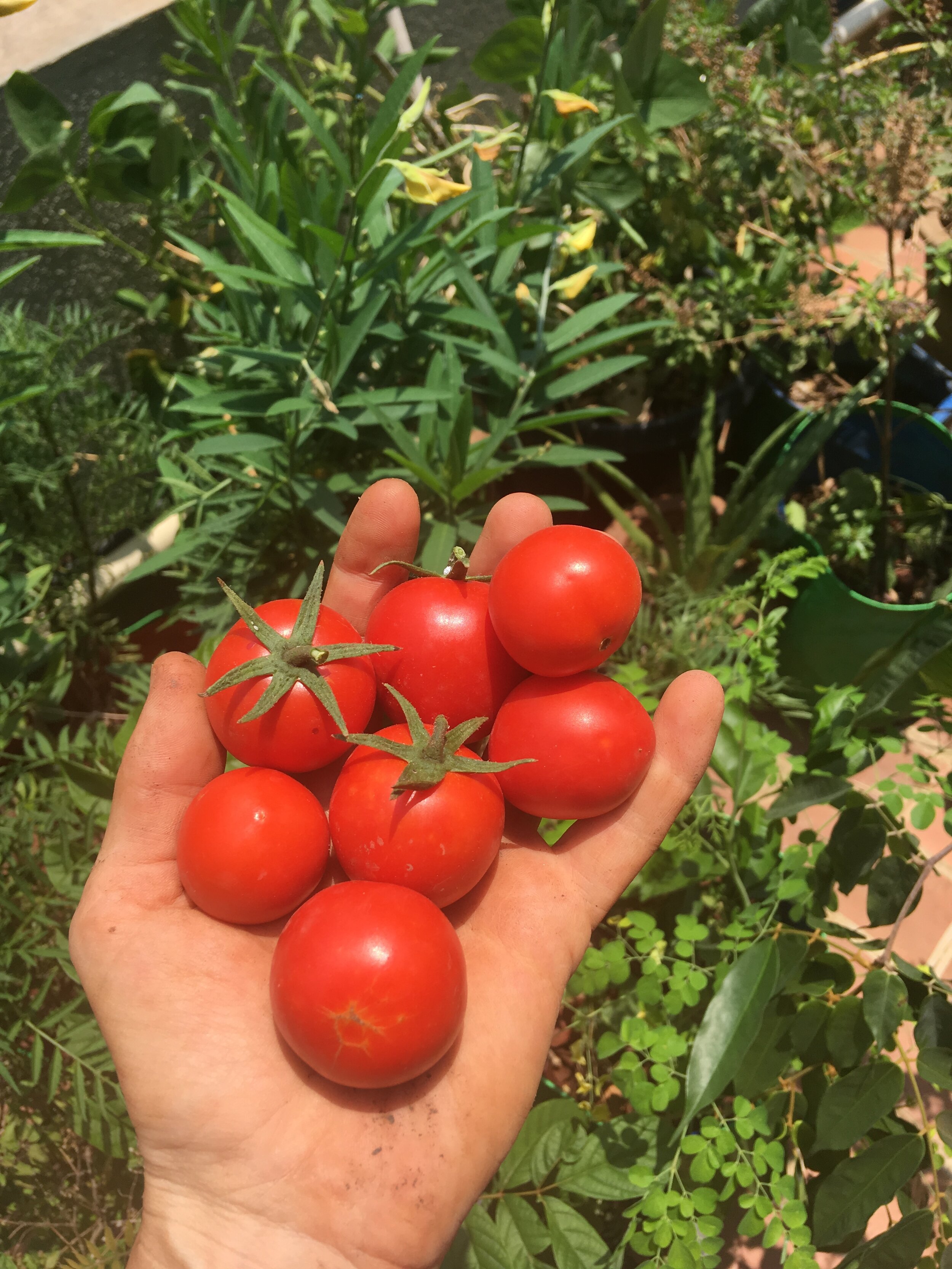
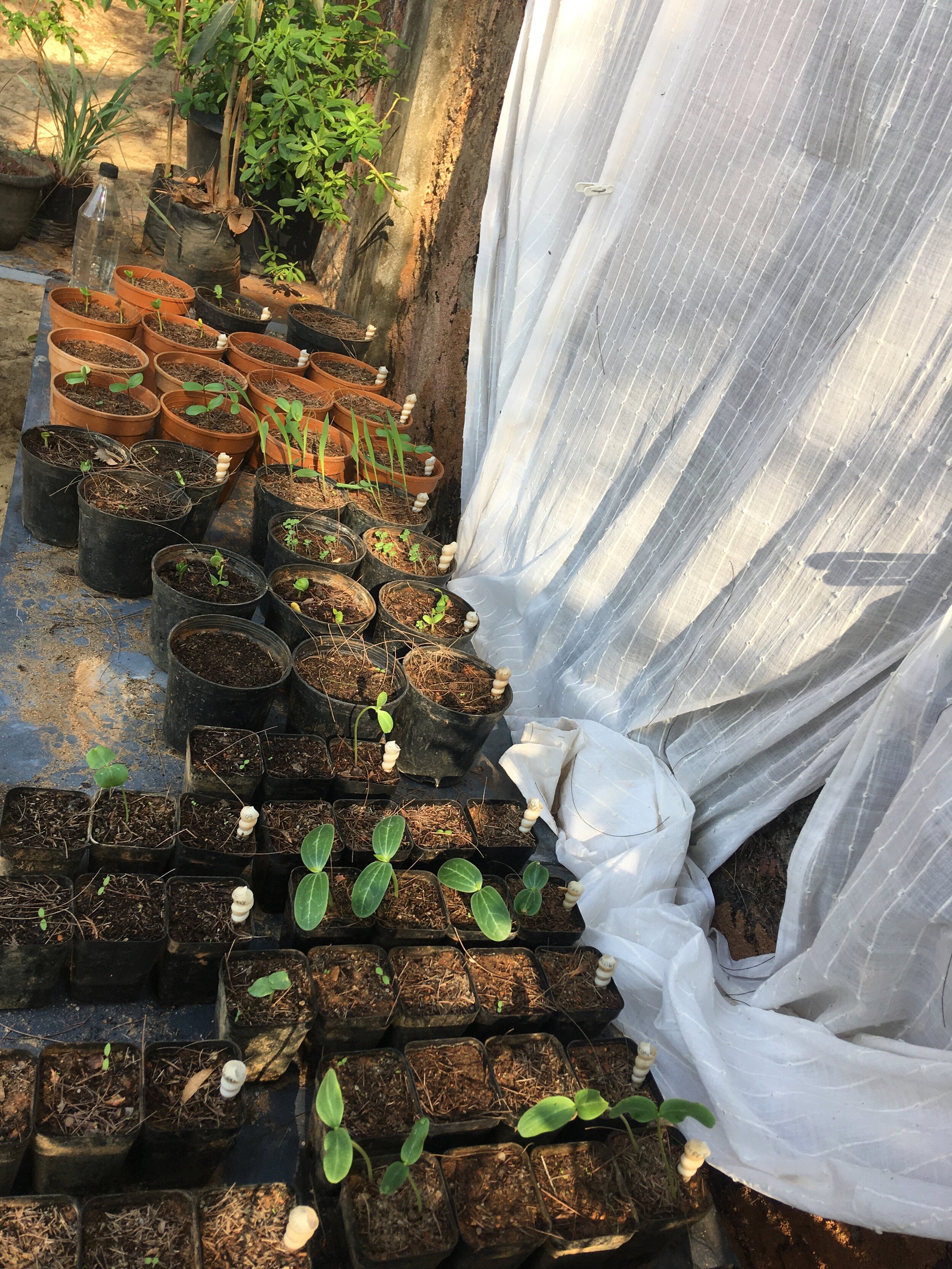
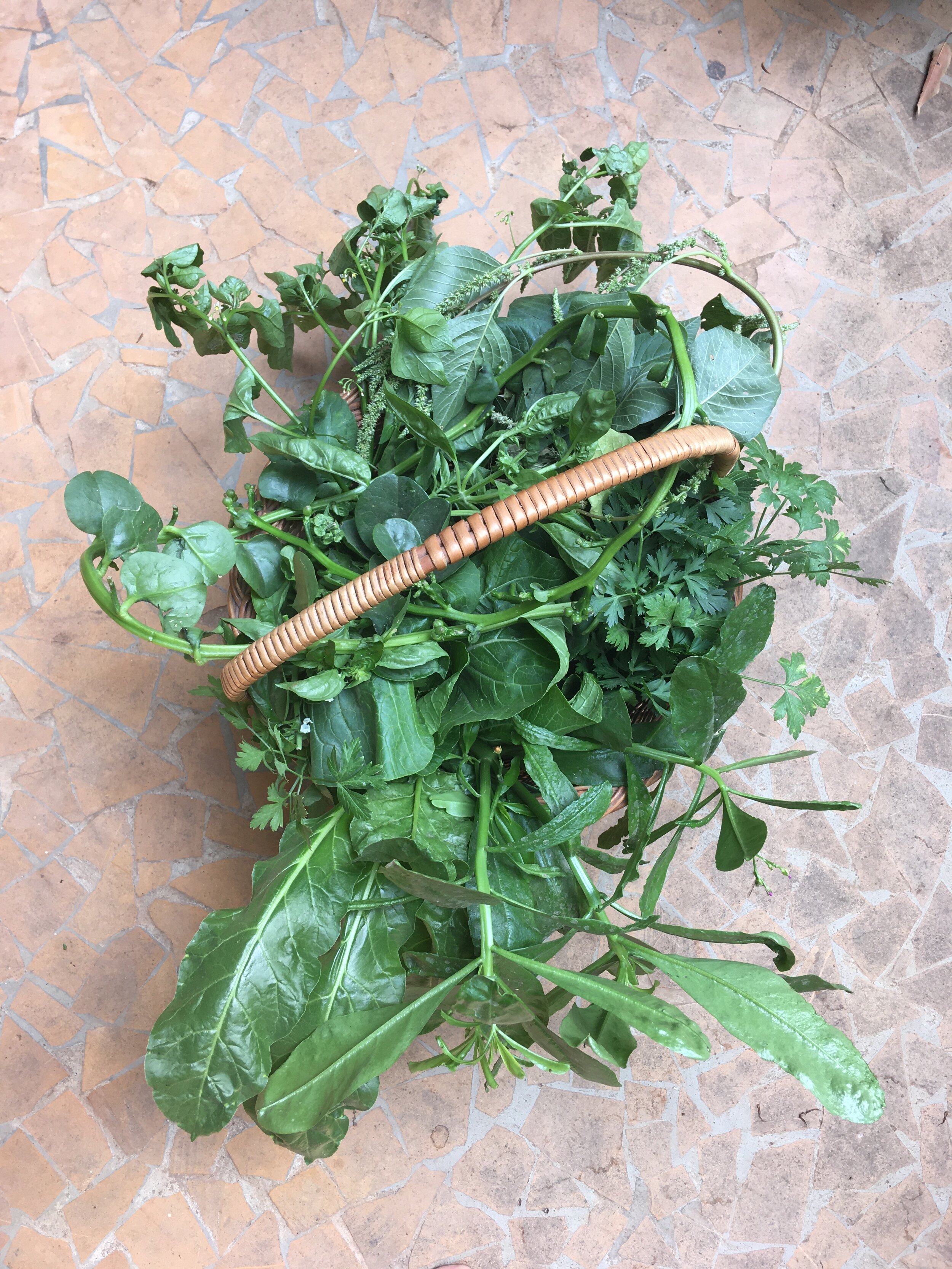
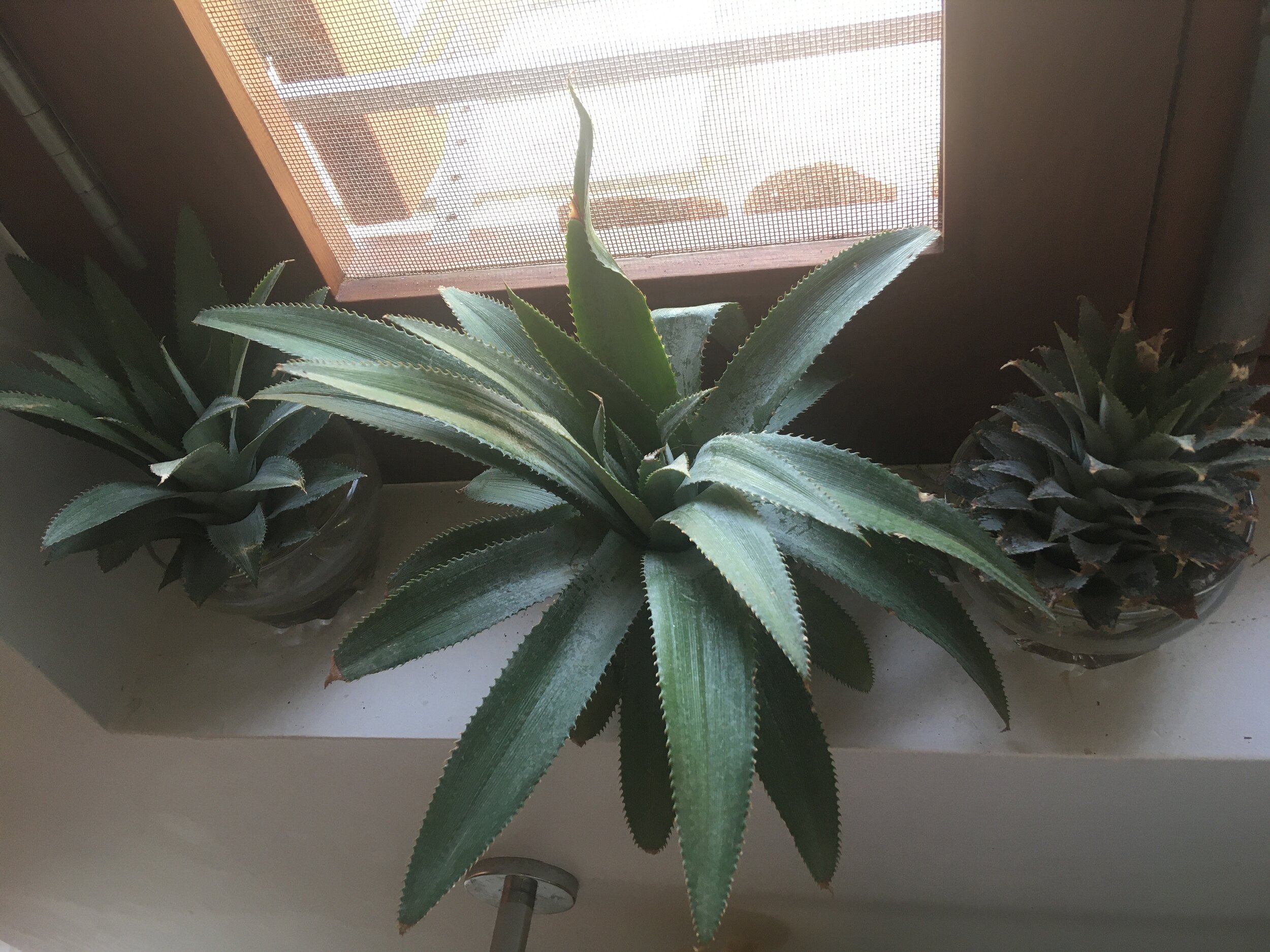
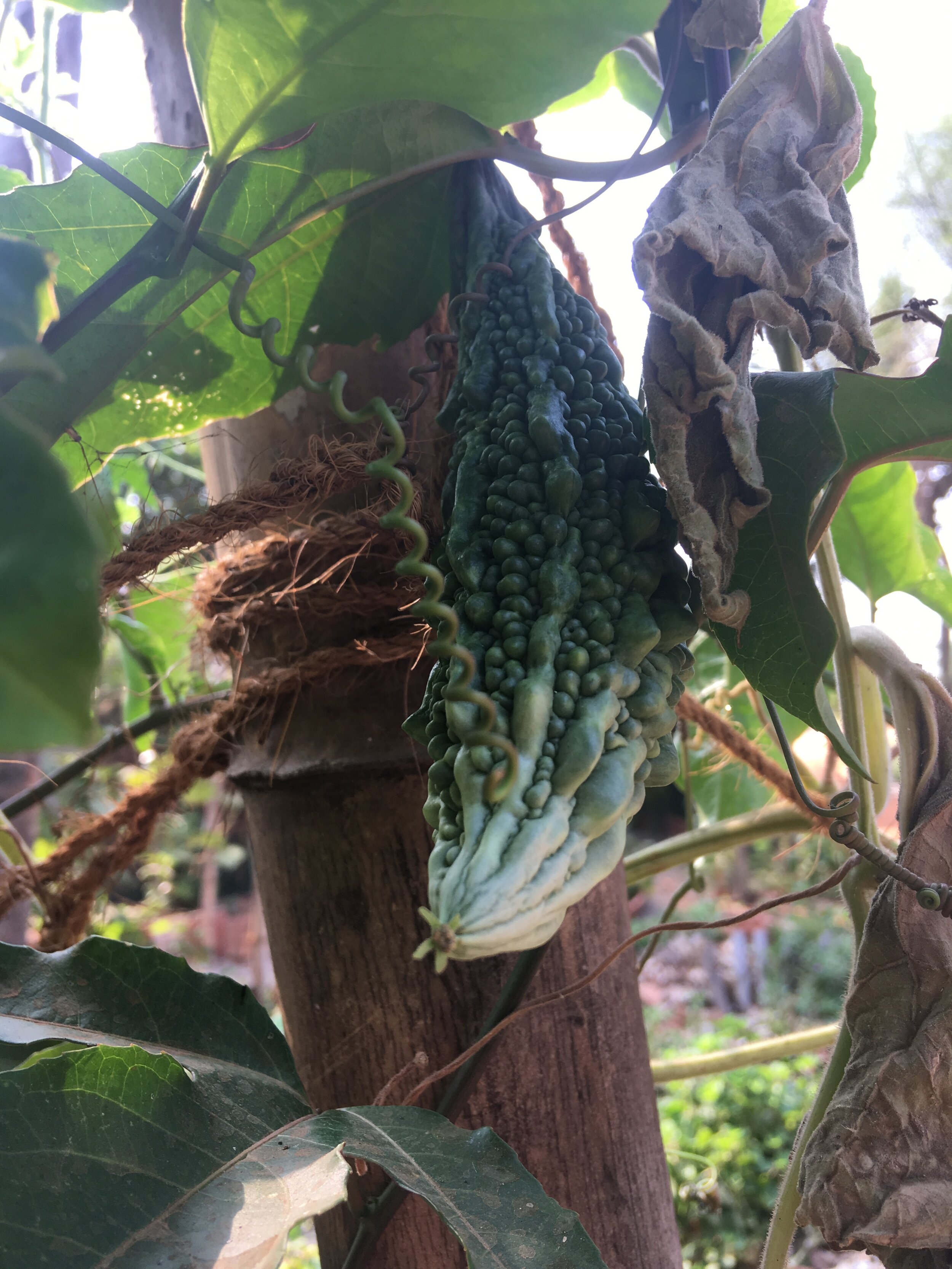
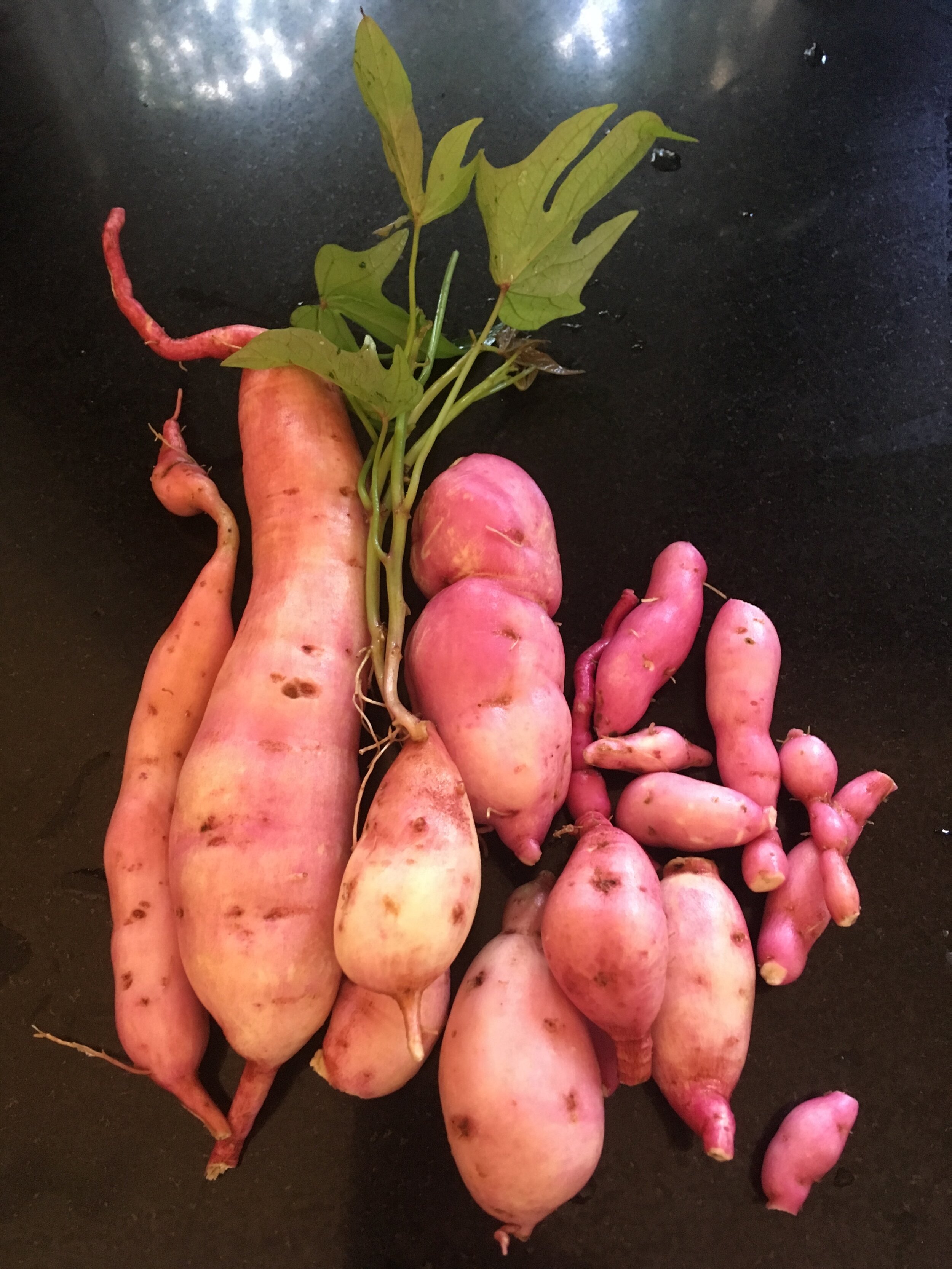
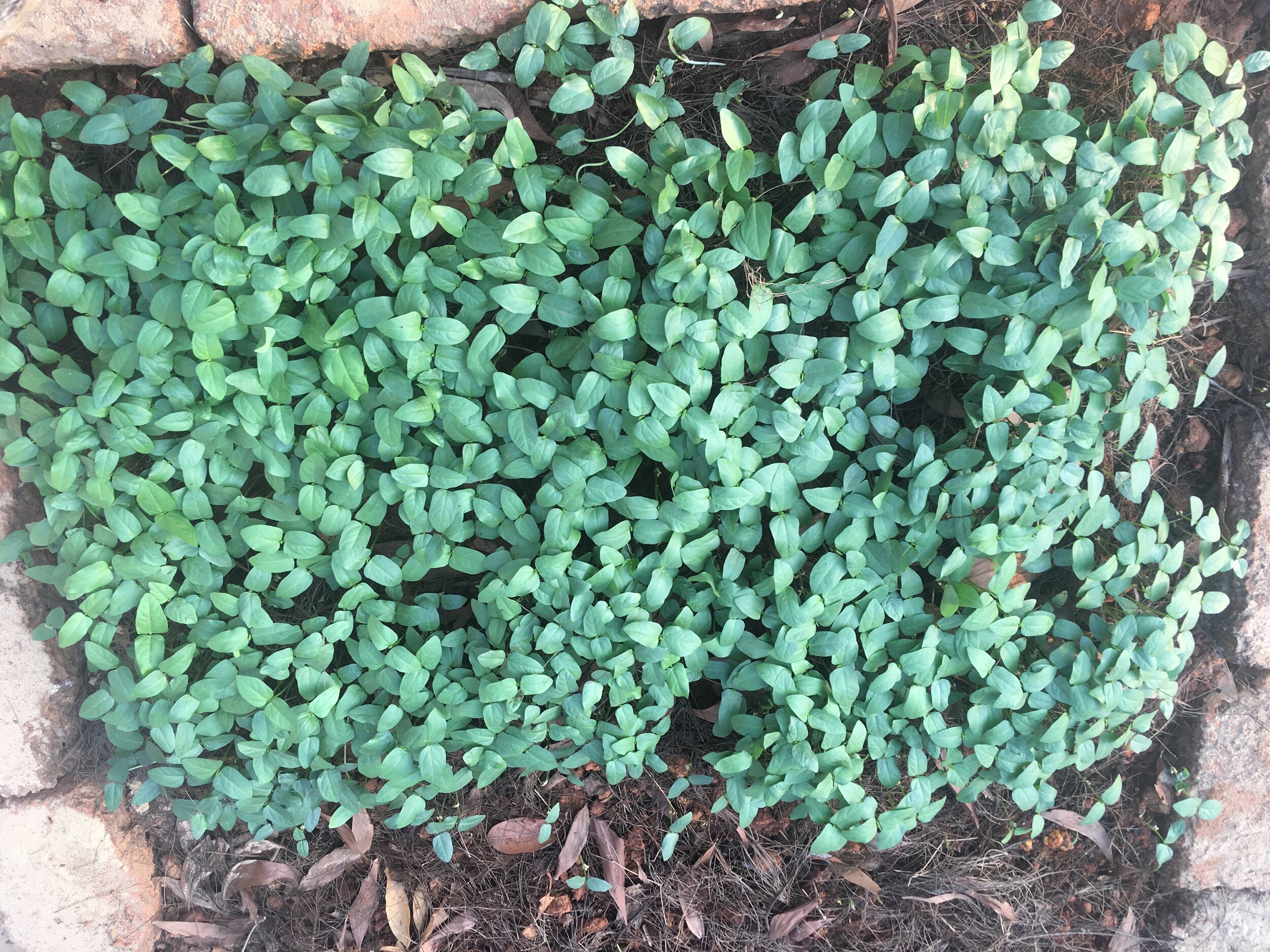
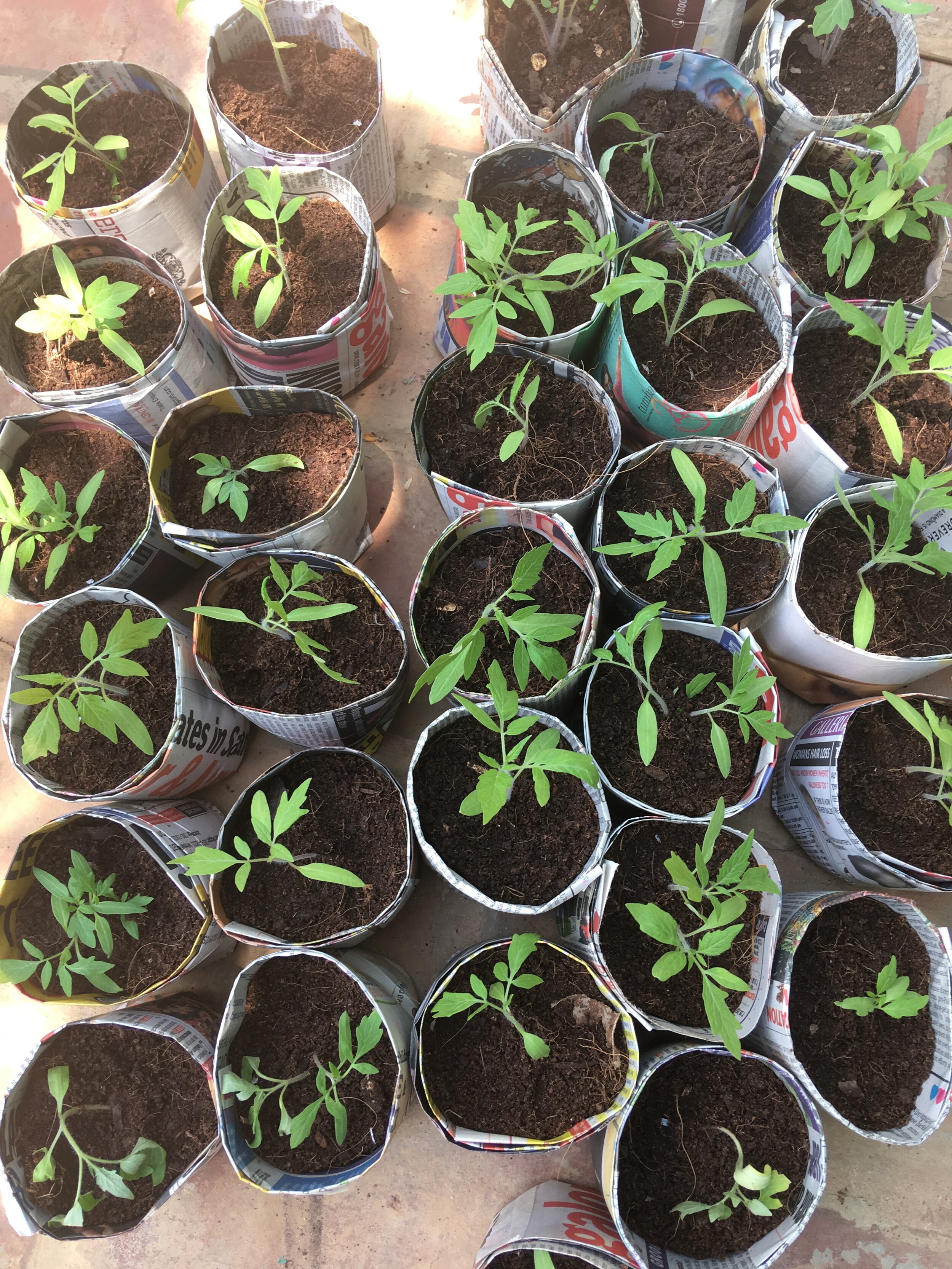

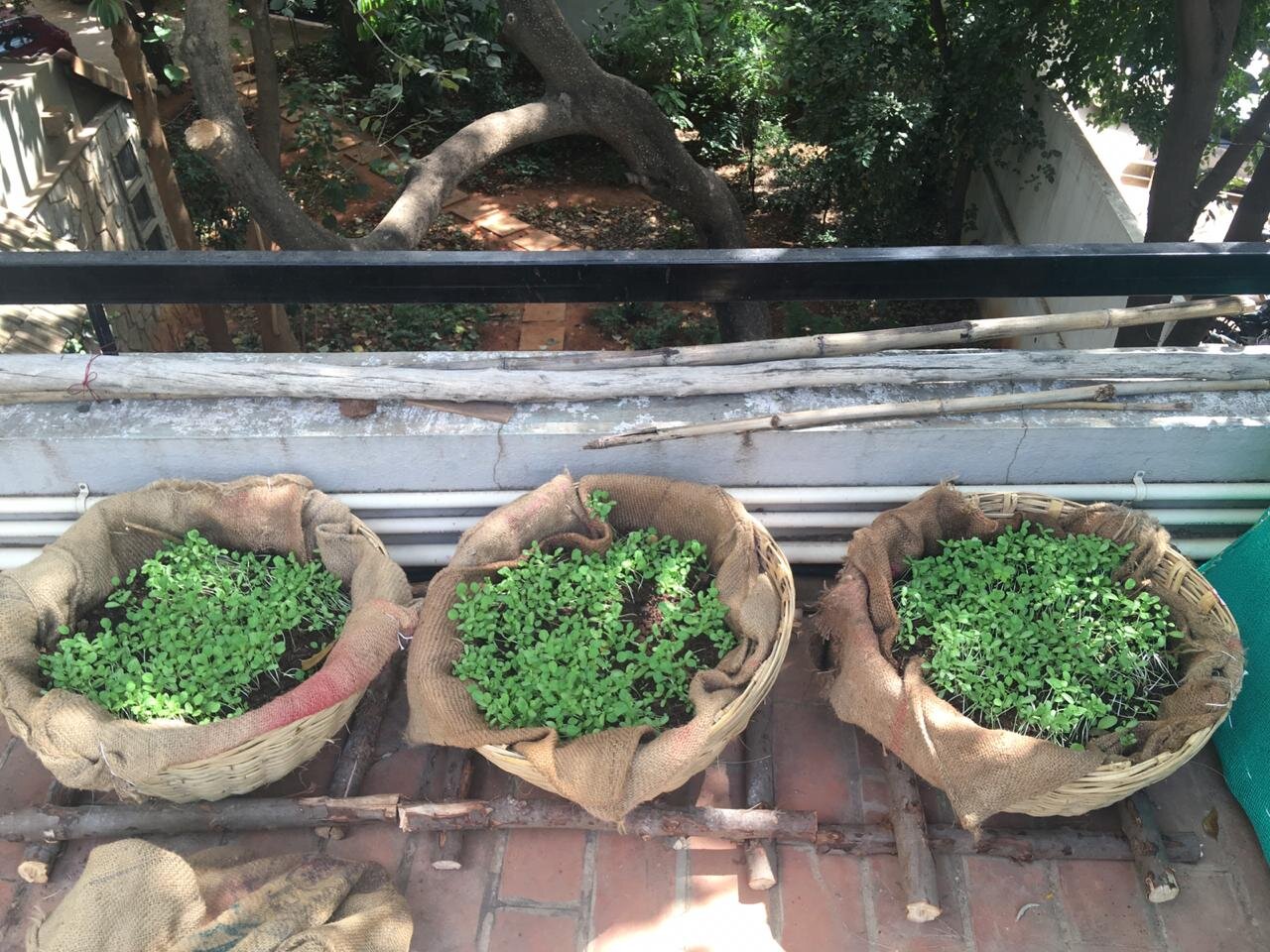

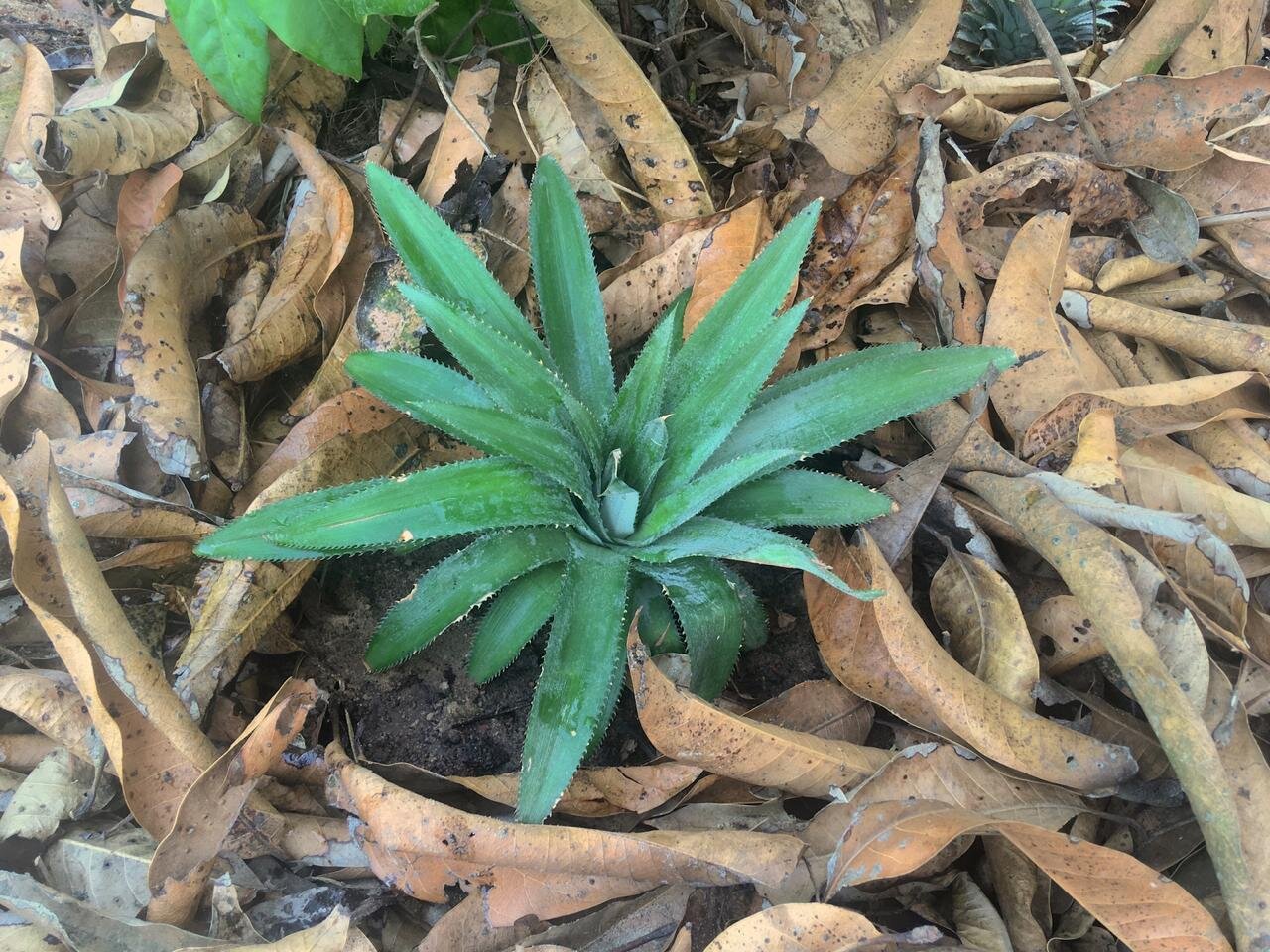
Where do I get my soil from?
You need very little red soil to get a rich potting mix for growing food. What you need is a mix of:
Dry leaves - collect garden waste or leaves fallen under trees near you
Red Soil - collect small amounts from any open land around you or from a nursery, ensure that its not premixed with any chemical fertilizers
Compost - convert your kitchen scraps into compost
Animal manure - If you have a source of dry animal manure or live close to grazing areas
If you spend your time at home for the next 2 months, click here to view a helpful veggie chart. It offers details on easy to grow vegetables, greens and herbs.
Small things count. We may or may not reduce the pressure on public food supply at this hour but we will be sowing the seeds of resilience.
.

